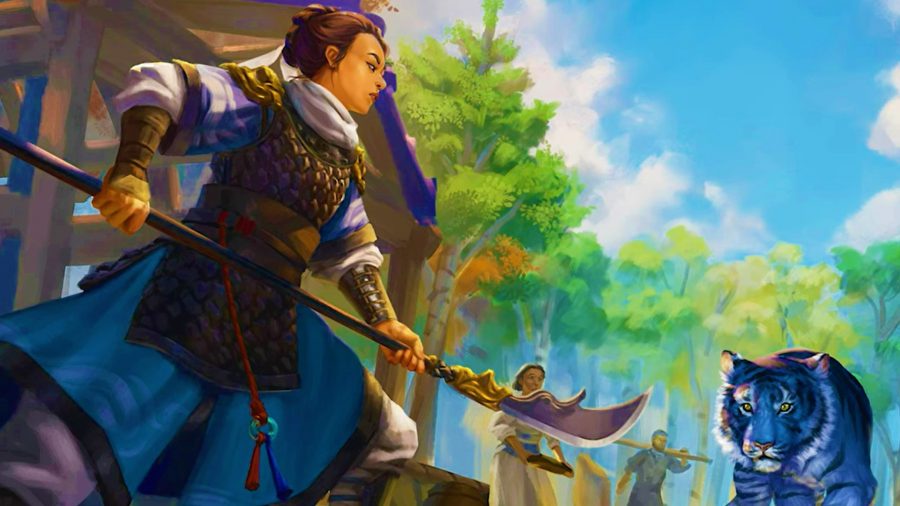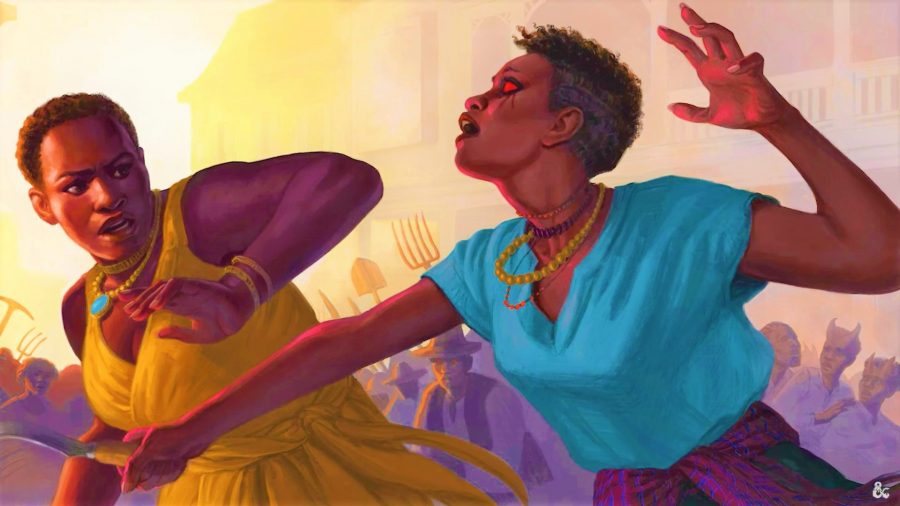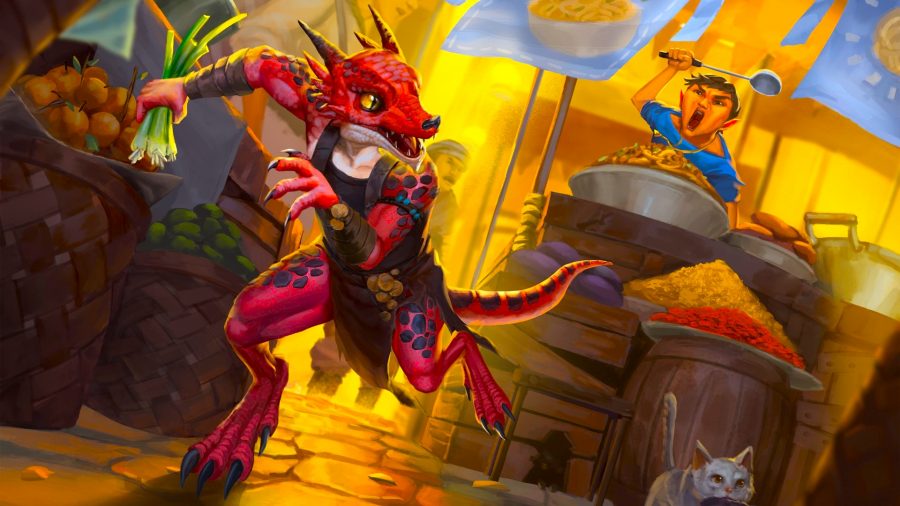The new (though delayed) release date for the next D&D book is fast approaching. Journeys Through the Radiant Citadel was first announced back in March, and it promised to be a vibrant, politically joyful anthology of adventures based on the cultures of its black and brown writers.
One of the newest DnD cities, the Radiant Citadel floats in the Ethereal Plane, acting as a hub and sanctuary for all who enter. It’s carved from the fossil of some enormous, unidentified creature, and adventurers can reach it from across the multiverse. And while the titular city is a spectacle in itself, this is an adventure anthology – meaning its big appeal is the doors it opens to new lands as yet unexplored in D&D 5e. Journeys Through the Radiant Citadel releases on July 19.
This concept came from the mind of book co-lead Ajit George as he wrote new 5e content for Ravenloft. When he’s not working on tabletop RPGs, George has a full-time job as a director for the nonprofit Shanti Bhavan Children’s Project. We recently caught up with George to talk all things Radiant Citadel – including his vision, influences, and what we can look forward to when the book releases.
WG: One thing that stands out about the Radiant Citadel is its design as a safe haven. How important were ideas like safety and hope for you when creating the Radiant Citadel?
AG: Oh, incredibly. The Radiant Citadel and everything else in this book are informed by the times that we live in and the moments of crisis we face. These were, I think, in the back of the heads of a lot of the writers.
Make it plane: A guide to DnD planes
As the project lead, I created some design documents as to what to expect from the book and what I don’t want from the book. I said no to any current war – that was because I find that stories are often based on war, and then we glorify war, and I have some real problems with the glorification of war.

I think heroes are like, ‘I’m a hero in a war’, but then you need a war to be a hero. And I think there are sometimes people seeking war to be a hero. I want to shine a light on different types of heroes – heroism that is possible when we avoid war and redefine what it means to be a hero.
The Radiant Citadel was informed deeply by my own work in the nonprofit field, but simultaneously by the environmental crisis that we face today, and a fractured society that only values you for what you can produce for an elite structure. I wanted to see what it would look like to have a city that had a more collaborative environment, that values the contributions of everybody relatively equally.
Here you have an opportunity to contribute to society, and as long as you are caring and you care about your environment and care about the other people in the society, you are valued.
Set the scene: A guide to the best DnD settings
I wanted a place where adventurers didn’t have to feel constantly under siege so that they could go back to and have more quiet roleplay, develop bonds between themselves, create bonds with NPCs, and investigate lore and mysteries. I wanted to create a city that had never been created in D&D before. The Radiant Citadel is vastly different from any other D&D city, radically so. And I think that’s a breath of fresh air for D&D.
Another of my vision guides for the writers said people of colour often (and understandably so) write versions of their cultural backgrounds that imagine no colonisation, but I have come to the conclusion that we have all been touched by colonisation. The scars of colonisation are unavoidable and inescapable, and they have left a mark on each one of us. It’s almost impossible to imagine a fantasy setting that does not have the scars of colonisation because we’re looking at everything through the lens of colonisation, whether we realise it or not.
When I set up this book, I said ‘you can also talk about being colonised, but it has to be in the distant past’. I didn’t want to centre the coloniser. You will never see the names of any of the colonising forces in any of the areas, and that is intentional. This book is not their story.

Are there any adventures you can tell us about that haven’t been given a spotlight yet?
The last adventure in the book, Orchids of the Invisible Mountain, does something unique – it’s the first adventure in fifth edition to take players to the Far Realm. The location the adventure starts off in, Atagua, has historically had close connections to the Feywild.
Marvellous modules: These are the best DnD campaigns
But then Atagua was invaded and occupied, and this caused a sequence of events that allowed the Far Realm to begin seeping through into Atagua with grave consequences for the people – and for something they treasure. In trying to fix that, the players will go to the Far Realm and face something that I believe is going to become an iconic villain for D&D.

One of the places that promises a lot of adventure options in the Radiant Citadel is the Court of Whispers. It’s a place where scouts and spies, criers and heralds, and everyone who has information to sell or to buy meets to trade in their skills or in the knowledge they possess. Players can do a lot here – maybe they need reconnaissance information for a quest they’re on and barter for it from a NPC. Or maybe they can hire themselves out as spies to infiltrate an organisation or government.
Bookworm: A guide to the best D&D books
But also you can have smaller, more intimate adventures start off here – maybe someone needs to locate a lost loved one or a family heirloom. The common citizen and the powerful all meet here. And because the Radiant Citadel is an extraplanar city, you’re going to see some familiar factions and faces from other books and worlds in the Court of Whispers. A lot of great tie-in possibilities.
How would you describe Journeys Through the Radiant Citadel to someone who is sceptical about reading it?
If you are tired of going to a European-style tavern where you’re sent on an adventure by the barkeep to the bar, and you feel like you’ve done this all before, this book will blow your mind. This book is a private tour of adventures by the writers who know their own cultures and are speaking intimately about them.
Domains of dread: Here’s a guide to the Ravenloft setting
The book has complex themes, but nobody’s preaching in this book. Ultimately, games are about fun. We’re talking our truths, and we’re telling our own lived experiences, but every adventure is still a D&D adventure. You can play these adventures and ignore the implications around them, or if you want to read deeply, it’s very easy to see more layered nuances. I think the book doesn’t come fully to life until a second or third read. You will be reading this book multiple times.
Source: Wargamer




